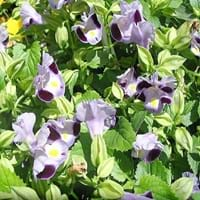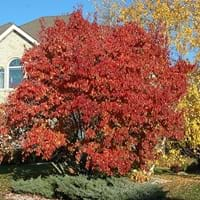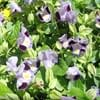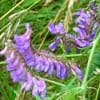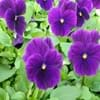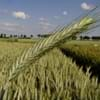Life Span
Annual
Perennial
Type
Flowering Plants
Tree
Origin
Southeastern Asia
Eastern Europe, Western Asia
Types
Not Available
Not available
Habitat
Humid climates, Subtropical climates, tropical environments
disturbed sites, Forest edges, gardens, Open Forest, Roadsides, Swamps, Urban areas
USDA Hardiness Zone
2-11
3-7
Sunset Zone
H1, H2, 1a, 1b, 2a, 2b, 3a, 3b, 4, 5, 6, 7, 8, 9, 10, 11, 12, 13, 14, 15, 16, 17, 18, 19, 20, 21, 22, 23, 24
1a, 1b, 2a, 2b, 3a, 3b, 4, 5, 6, 7, 8, 9, 14
Habit
Clump-Forming
Oval or Rounded
Flower Color
White, Blue, Purple, Pink, Light Blue, Dark Blue, Lavender
Light Green, Ivory
Flower Color Modifier
Bicolor
Bicolor
Fruit Color
Tan
Red, Crimson
Leaf Color in Spring
Green
Green
Leaf Color in Summer
Green
Green
Leaf Color in Fall
Green
Yellow, Red, Orange, Gold, Crimson
Leaf Color in Winter
Light Green
Not Available
Leaf Shape
Acuminate
Lobed
Plant Season
Spring, Summer, Fall, Winter
Spring, Summer, Fall
Sunlight
Partial Sun, Partial shade, Full Shade
Full Sun, Partial Sun
Type of Soil
Clay, Loam, Sand
Loam
The pH of Soil
Acidic, Neutral
Acidic, Neutral, Alkaline
Soil Drainage
Well drained
Well drained
Bloom Time
Indeterminate
Early Spring, Spring
Tolerances
Drought
Drought, Pollution, Salt, Shade areas, Soil Compaction
Where to Plant?
Ground
Ground
How to Plant?
Cuttings, Seedlings
Layering, Leaf Cutting, Seedlings, Stem Cutting
Plant Maintenance
Medium
Low
Watering Requirements
Do not water excessively, Water Deeply, Water in morning to avoid prompting diseases, Water in the early morning hours
Keep ground moist, Medium, Requires consistently moist soil
In Summer
Lots of watering
Lots of watering
In Spring
Moderate
Moderate
In Winter
Average Water
Keep Slightly Dry
Soil pH
Acidic, Neutral
Acidic, Neutral, Alkaline
Soil Type
Clay, Loam, Sand
Loam
Soil Drainage Capacity
Average
Well drained
Sun Exposure
Part sun, Partial shade
Full Sun, Partial Sun
Pruning
Cut or pinch the stems, Remove damaged leaves, Remove dead branches, Remove dead leaves
Pruning in early stages, Remove damaged leaves, Remove dead branches, Remove dead leaves
Fertilizers
All-Purpose Liquid Fertilizer, Apply N-P-K
All-Purpose Liquid Fertilizer, Bonsai
Pests and Diseases
Disease free, Fungal Diseases, Fungal leaf spots, fungus, Pest Free, Red blotch
Aphids, Borers, Honey fungus, Red blotch, Soft scales
Plant Tolerance
Drought, Moisture, Pests and diseases, Shade areas
Drought, Pollution, Salt, Shade areas, Soil Compaction
Flower Petal Number
Single
Not Available
Foliage Texture
Medium
Medium
Foliage Sheen
Matte
Glossy
Attracts
Not Available
Deers, Not Available, Rabbits, Squirrels
Allergy
Not Available
Not Available
Aesthetic Uses
Beautification, Borders
Beautification, Cottage Garden, Showy Purposes
Beauty Benefits
Not Available
Not Available
Environmental Uses
Air purification
Agroforestry, Wildlife, Windbreak
Medicinal Uses
Not Available
Astringent
Part of Plant Used
Not Available
Fruits, Leaves
Other Uses
Not Available
As a tea substitute, Florist trade and landscaping, Food for animals, Showy Purposes
Used As Indoor Plant
No
No
Used As Outdoor Plant
Yes
Yes
Garden Design
Bog Garden, Cottage garden, Edging, Flower borders
Feature Plant, Foundation, Hedges, Mixed Border, Screening / Wind Break, Street Trees
Botanical Name
TORENIA fournieri
Acer ginnala
Common Name
Bluewings, Florida Pansy, Wishbone Flower
Amur Maple
In Hindi
Bluewings
अमुर मेपल
In German
Bluewings
Amur-Ahorn
In French
Bluewings
érable de l'Amour
In Spanish
Bluewings
arce de Amur
In Greek
Bluewings
Amur Maple
In Portuguese
Bluewings
de bordo amur
In Polish
Bluewings
klon amur
In Latin
Bluewings
amur acernis
Phylum
Tracheophyta
Magnoliophyta
Class
Magnoliopsida
Magnoliopsida
Order
Lamiales
Sapindales
Family
Linderniaceae
Aceraceae
Clade
Angiosperms, Asterids, Eudicots
Angiosperms, Eudicots, Rosids
Tribe
Not Available
Not Available
Subfamily
Not Available
Hippocastanoideae
